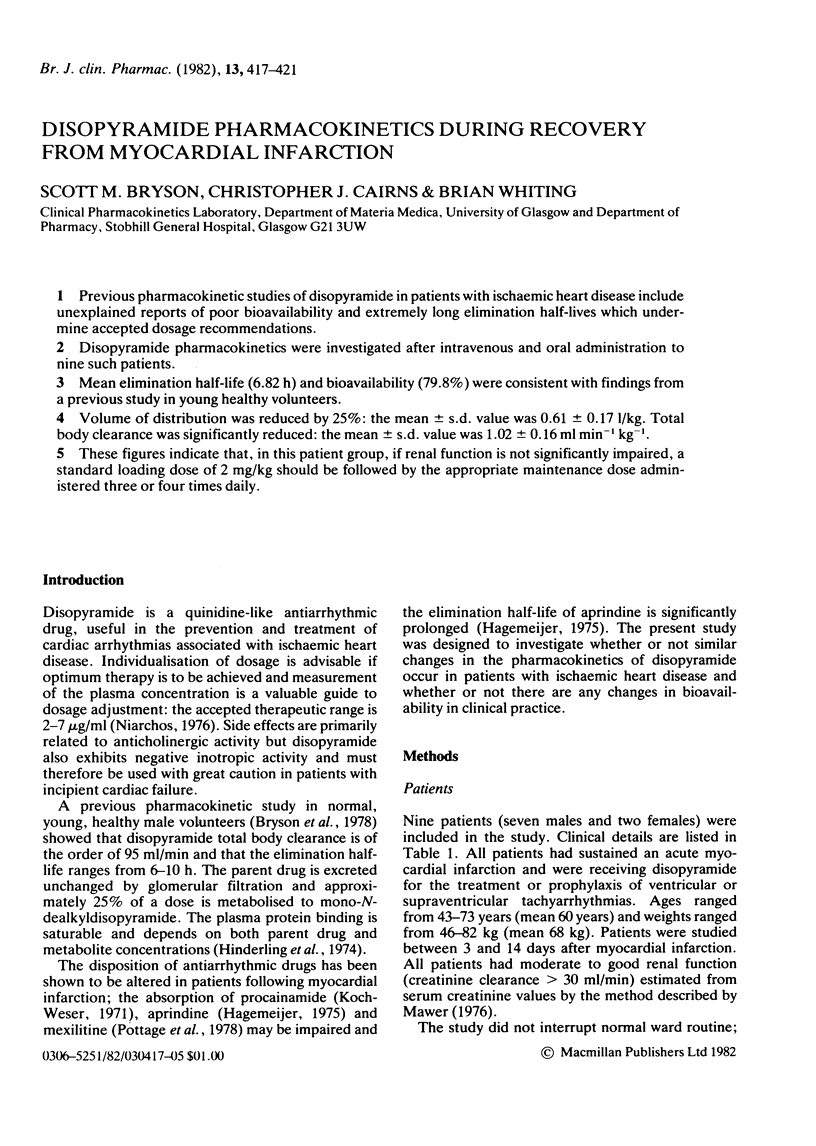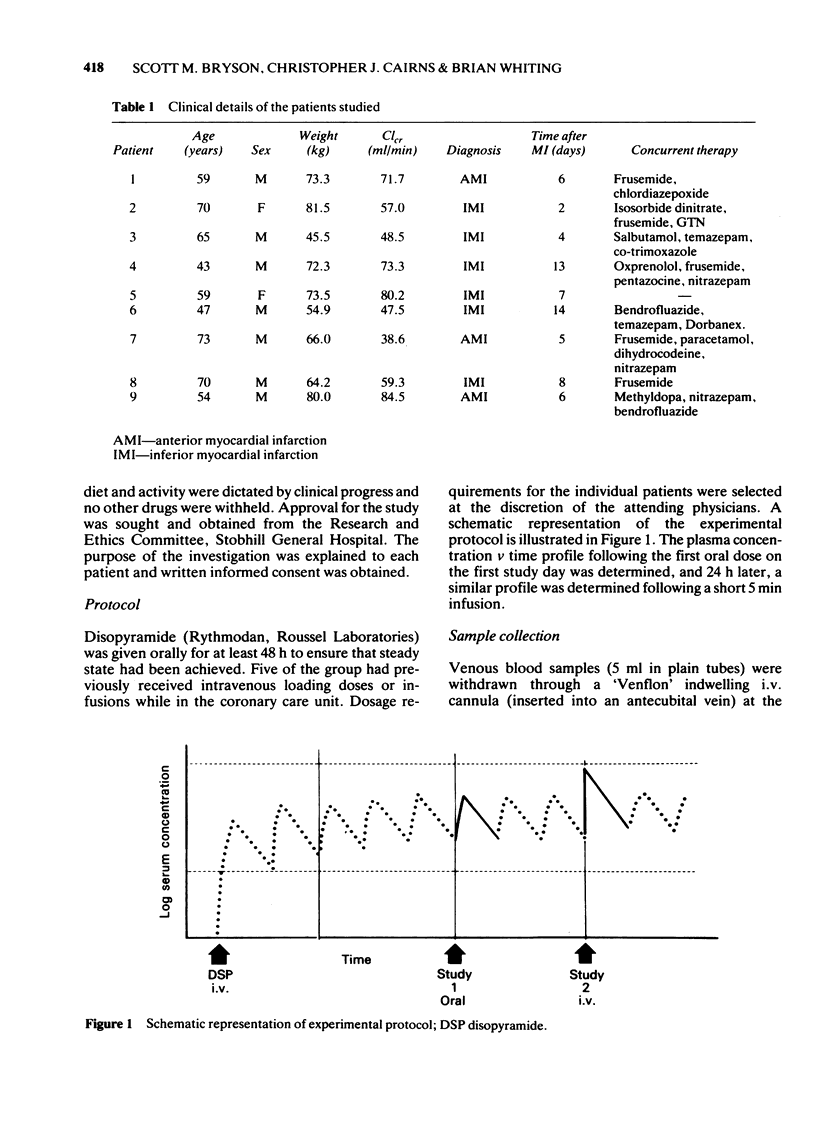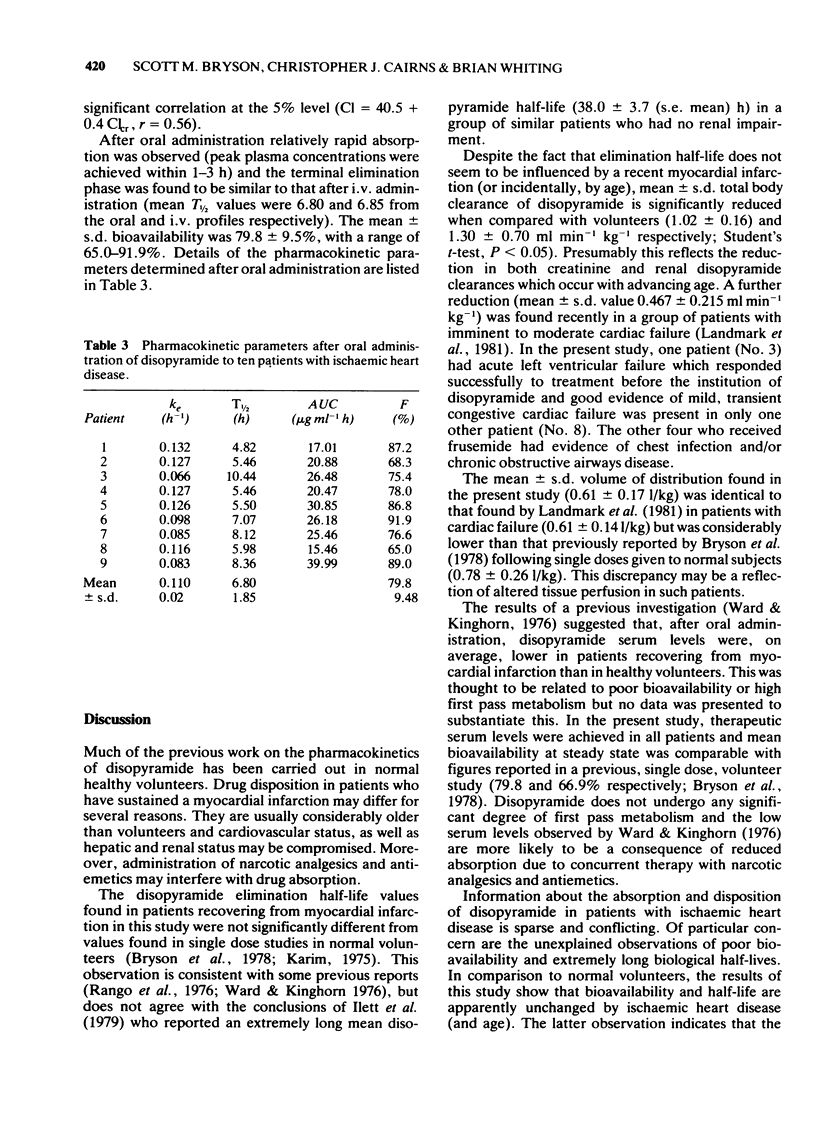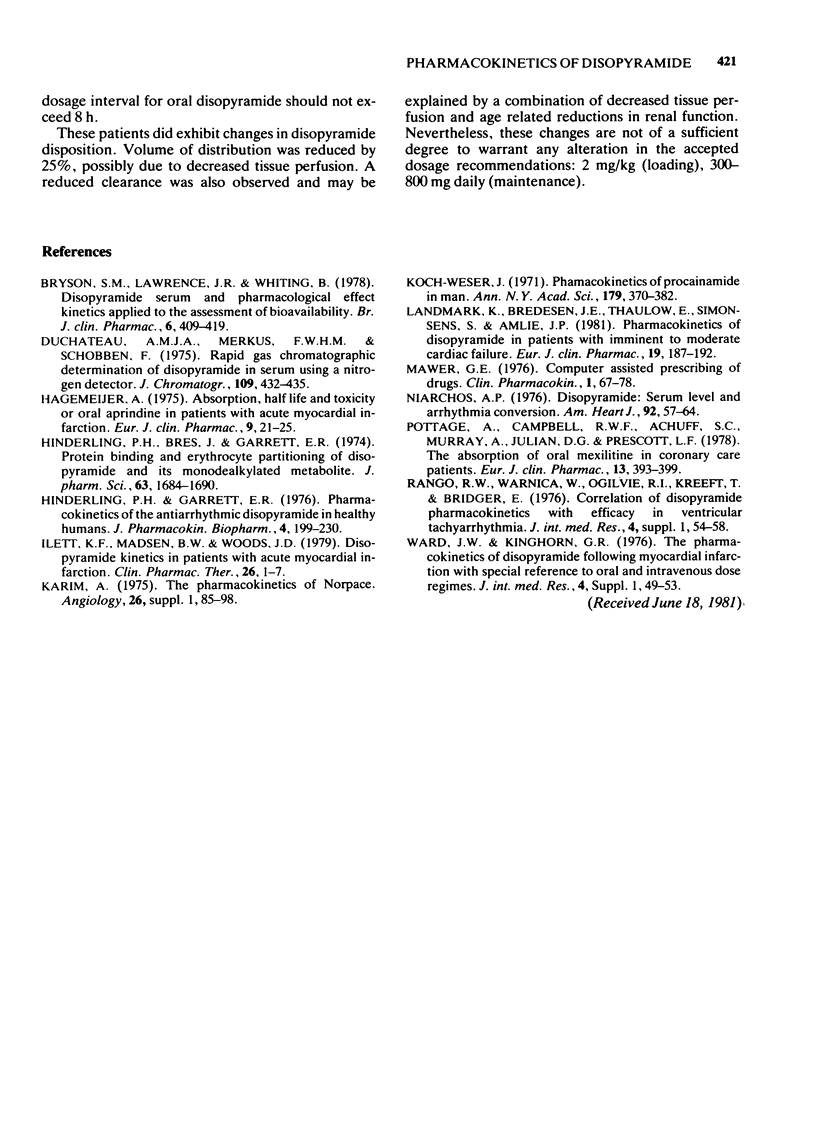Abstract
1 Previous pharmacokinetics studies of disopyramide in patients with ischaemic heart disease include unexplained reports of poor bioavailability and extremely long elimination half-lives which undermine accepted dosage recommendations. 2 Disopyramide pharmacokinetics were investigated after intravenous and oral administration to nine such patients. 3 Mean elimination half-life (6.82 h) and bioavailability (79.8%) were consistent with findings from a previous study in young healthy volunteers. 4 Volume of distribution was reduced by 25%: the mean +/- s.d. value was 0.61 +/- 0.17 l/kg. Total body clearance was significantly reduced: the mean +/- s.d. value was 1.02 +/- 0.16 ml min-1 kg-1. 5 These figures indicate that, in this patient group, if renal function is not significantly impaired, a standard loading dose of 2 mg/kg should be followed by the appropriate maintenance dose administered three or four times daily.
Full text
PDF




Selected References
These references are in PubMed. This may not be the complete list of references from this article.
- Bryson S. M., Whiting B., Lawrence J. R. Disopyramide serum and pharmacologic effect kinetics applied to the assessment of bioavailability. Br J Clin Pharmacol. 1978 Nov;6(5):409–419. doi: 10.1111/j.1365-2125.1978.tb04605.x. [DOI] [PMC free article] [PubMed] [Google Scholar]
- Duchateau A. M., Merkus F. W., Schobben F. Rapid gas chromatographic determination of disopyramide in serum using a nitrogen detector. J Chromatogr. 1975 Jun 18;109(2):432–435. doi: 10.1016/s0021-9673(01)91823-0. [DOI] [PubMed] [Google Scholar]
- Hagemeijer F. Absorption, half-life, and toxicity of oral aprindine in patients with acute myocardial infarction. Eur J Clin Pharmacol. 1975 Oct 10;9(1):21–25. doi: 10.1007/BF00613425. [DOI] [PubMed] [Google Scholar]
- Hinderling P. H., Bres J., Garrett E. R. Protein binding and erythrocyte partitioning of disopyramide and its monodealkylated metabolite. J Pharm Sci. 1974 Nov;63(11):1684–1690. doi: 10.1002/jps.2600631103. [DOI] [PubMed] [Google Scholar]
- Hinderling P. H., Garrett E. R. Pharmacokinetics of the antiarrhythmic disopyramide in healthy humans. J Pharmacokinet Biopharm. 1976 Jun;4(3):199–230. doi: 10.1007/BF01063614. [DOI] [PubMed] [Google Scholar]
- Ilett K. F., Madsen B. W., Woods J. D. Disopyramide kinetics in patients with acute myocardial infarction. Clin Pharmacol Ther. 1979 Jul;26(1):1–7. doi: 10.1002/cpt19792611. [DOI] [PubMed] [Google Scholar]
- Karim A. The pharmacokinetics of Norpace. Angiology. 1975 Jan;26(1 Pt 2):85–98. [PubMed] [Google Scholar]
- Koch-Weser J. Pharmacokinetic of procainamide in man. Ann N Y Acad Sci. 1971 Jul 6;179:370–382. doi: 10.1111/j.1749-6632.1971.tb46914.x. [DOI] [PubMed] [Google Scholar]
- Landmark K., Bredesen J. E., Thaulow E., Simonsen S., Amlie J. P. Pharmacokinetics of disopyramide in patients with imminent to moderate cardiac failure. Eur J Clin Pharmacol. 1981 Feb;19(3):187–192. doi: 10.1007/BF00561947. [DOI] [PubMed] [Google Scholar]
- Mawer G. E. Computer assisted prescribing of drugs. Clin Pharmacokinet. 1976;1(1):67–78. doi: 10.2165/00003088-197601010-00006. [DOI] [PubMed] [Google Scholar]
- Niarchos A. P. Disopyramide: serum level and arrhythmia conversion. Am Heart J. 1976 Jul;92(1):57–64. doi: 10.1016/s0002-8703(76)80403-6. [DOI] [PubMed] [Google Scholar]
- Rangno R. E., Warnica W., Ogilvie R. I., Kreeft J., Bridger E. Correlation of disopyramide pharmacokinetics with efficacy in ventricular tachyarrhythmia. J Int Med Res. 1976;4(1 Suppl):54–58. [PubMed] [Google Scholar]
- Ward J. W., Kinghorn G. R. The pharmacokinetics of disopyramide following myocardial infarction with special reference to oral and intravenous dose regimens. J Int Med Res. 1976;4(1 Suppl):49–53. [PubMed] [Google Scholar]


